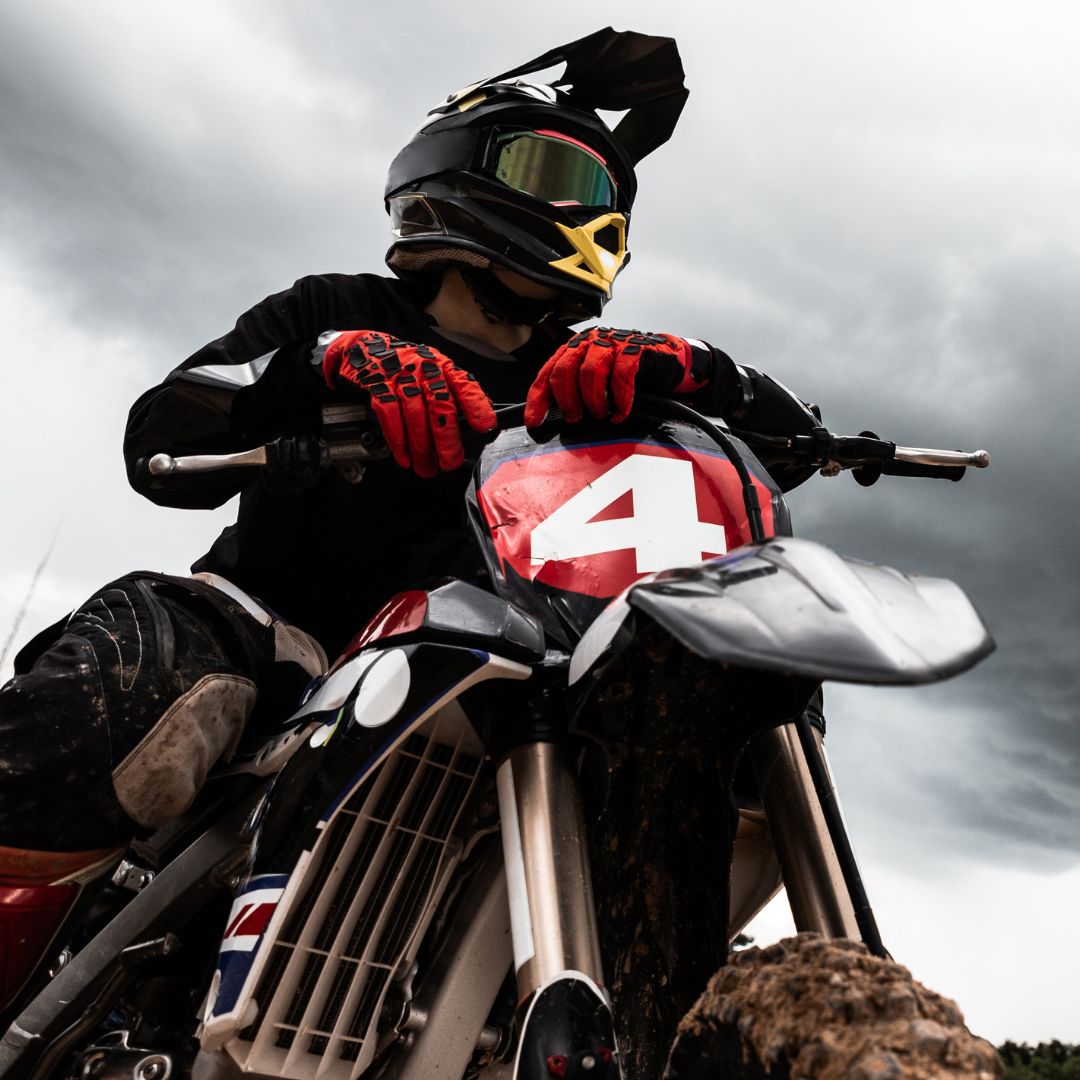
Updated: 28.4.25
If you’ve got a young racer tearing around your backyard or eyeing up the local dirt track, you know the rush—and the risks—that come with the ride.
But speed needs to meet safety, and that starts with one critical piece of gear: the helmet.
Let’s dive into how to keep your little speedster safe while they chase the finish line.
Why Helmet Safety Matters
First up, the stakes: head injuries in go-karting and dirt biking can range from mild concussions to serious skull fractures.
It’s not just about falls either—collisions, debris, and surprise obstacles can all lead to dangerous impacts.
A quality helmet dramatically reduces the risk, acting as the first—and best—line of defense.
Perfect Fit = Maximum Protection

Forget about “growing into it.” A properly fitted helmet is non-negotiable for safety and comfort. Here’s how to get it right:
- Measure the Head: Measure around 1 inch above the eyebrows for the most accurate sizing.
- Fit Test: The helmet should feel snug—no wobbling or shifting when they shake their head.
- Cheek Pads: Pads should touch but not squash the cheeks uncomfortably.
- Goggle Room: If using goggles, ensure enough space between the face and the visor.
- Chin Strap: Easy to secure, tight enough to stay put but loose enough for comfort.
Comfort matters too. Look for breathable liners and helmets with good ventilation—especially if your child races in warm weather.
Choosing the Right Helmet
Style is cool, but safety is cooler. Here’s what to prioritize:
- Type: Full-face helmets offer better protection than open-face designs—especially for the chin and jaw.
- Certification: Always check for SNELL, DOT, ANSI, or CEN certifications. No sticker? No buy.
Helmet Materials: What You Need to Know
Helmets combine a hard outer shell and a soft inner liner to absorb and spread impact energy.
| Material | Weight | Impact Resistance | Cost |
|---|---|---|---|
| Polycarbonate | Light | High | ££ |
| Fiberglass Composite | Medium | Very High | £££ |
| Carbon Fibre | Very Light | Extremely High | ££££ |
| EPS Foam (inner liner) | Variable | High | £ |
Lighter helmets help prevent neck fatigue, especially in younger riders.
Visor Protection
Visors aren’t just for looks—they’re vital for clear vision and face protection. Look for:
- Anti-fog coating
- Anti-scratch protection
- UV shielding
- Impact resistance
Bonus: Quick-release visor systems make swapping visors easier for different weather conditions.
Helmet Maintenance: Extend the Life of Your Investment
A helmet’s job is only as good as its condition:
- After a Crash: Replace it—even if there’s no visible damage.
- Storage: Keep helmets cool, dry, and out of direct sunlight.
- Handle Carefully: Always handle by the straps and avoid dropping it.
- Service Life: Replace helmets every 3–5 years, even without impacts, due to material degradation.
Building a Safety-First Mindset
Protective gear is only part of the equation. Safety culture matters just as much:
- Lead by example—always wear your own safety gear.
- Play educational games about safe riding and track rules.
- Encourage open conversations about safety concerns and incidents.
Other Essential Gear
Besides the helmet, full protection means:
- Goggles for eye protection
- Durable gloves
- Long-sleeve racing suits
- Sturdy boots
- Knee and elbow pads
Race Day Checklist
- Helmet: Fit checked and secure
- Visor: Clear and undamaged
- Gloves: Snug fit
- Racing Suit: Full coverage
- Boots: Good ankle support
- Knee/Elbow Pads: Secure and comfortable
Conclusion: Gear Up for Safe Thrills
Racing and dirt biking are thrilling, confidence-boosting adventures—but only when safety leads the way.
By choosing the right helmet, maintaining it properly, and fostering a culture of responsibility, you set your young racer up for unforgettable—and safe—rides.
Ready, set, ride—safely!
Get in Touch 🚀
Loved our guide on Helmet Safety for Kids? Want more ride-ready advice?
Explore RiiRoo.com or hit us up via Live Chat—we're always ready to roll!





Share:
The Educational Benefits of Kids Ride-On Toys
DIY Maintenance Tips for Kids Ride-On Toys